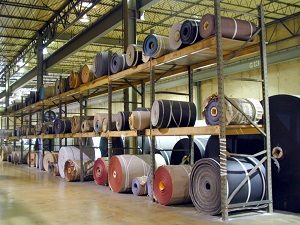Conveyors are only as good as the belts they are fitted with, but choosing the right conveyor belt is a critical, yet often overlooked, detail. The wrong belt can significantly affect your throughput, cost, downtime and safety, so you need to get it right.

So how do you choose the best belt for your conveyor? When it comes to choosing the best belt for your specific application, there are many considerations, including:
• The material or materials you need to move
• The size, weight and distribution of the materials to be conveyed
• The environment the conveyor will operate in (temperature, dry or wet conditions, hazards, etc.)
• The speed the materials will need to travel and whether they move up or down
Conveyor belts are available in a variety of materials, cover thicknesses and grades that can be selected to meet your specific application. Available materials for belting include: rubber, PVC, urethane, neoprene, nylon, nitrile, polyester and kevlar.
For grain and feed applications, PVC and heavy-duty rubber belting are both good options. No matter which conveyor belt you decide is best for you, make sure that the belting meets or exceeds OSHA safety standards for static conductivity and Mine Safety Health Act (MSHA) flame-resistance standards.
When you select the right belts for your application and needs, make sure to also consider how that belting should be maintained, replaced or modified, and the associated costs.
If you need help determining the best belts for your conveyor and your agricultural application, call on KC Supply Co. to help. KC Supply Co. offers a full supply of conveyors, belts and accessories. We have the equipment, parts and accessories you need for your business, including bucket elevator belts, elevator buckets, bolts and parts. Call our knowledgeable sales staff today, 800.KC.SUPPLY.


